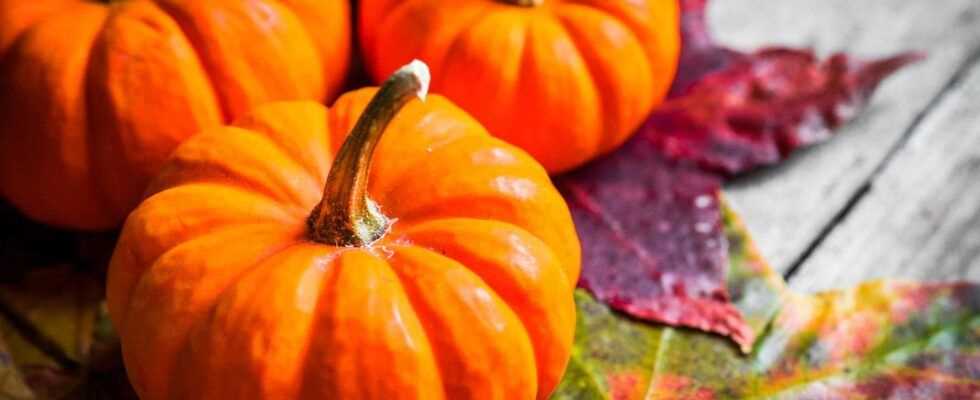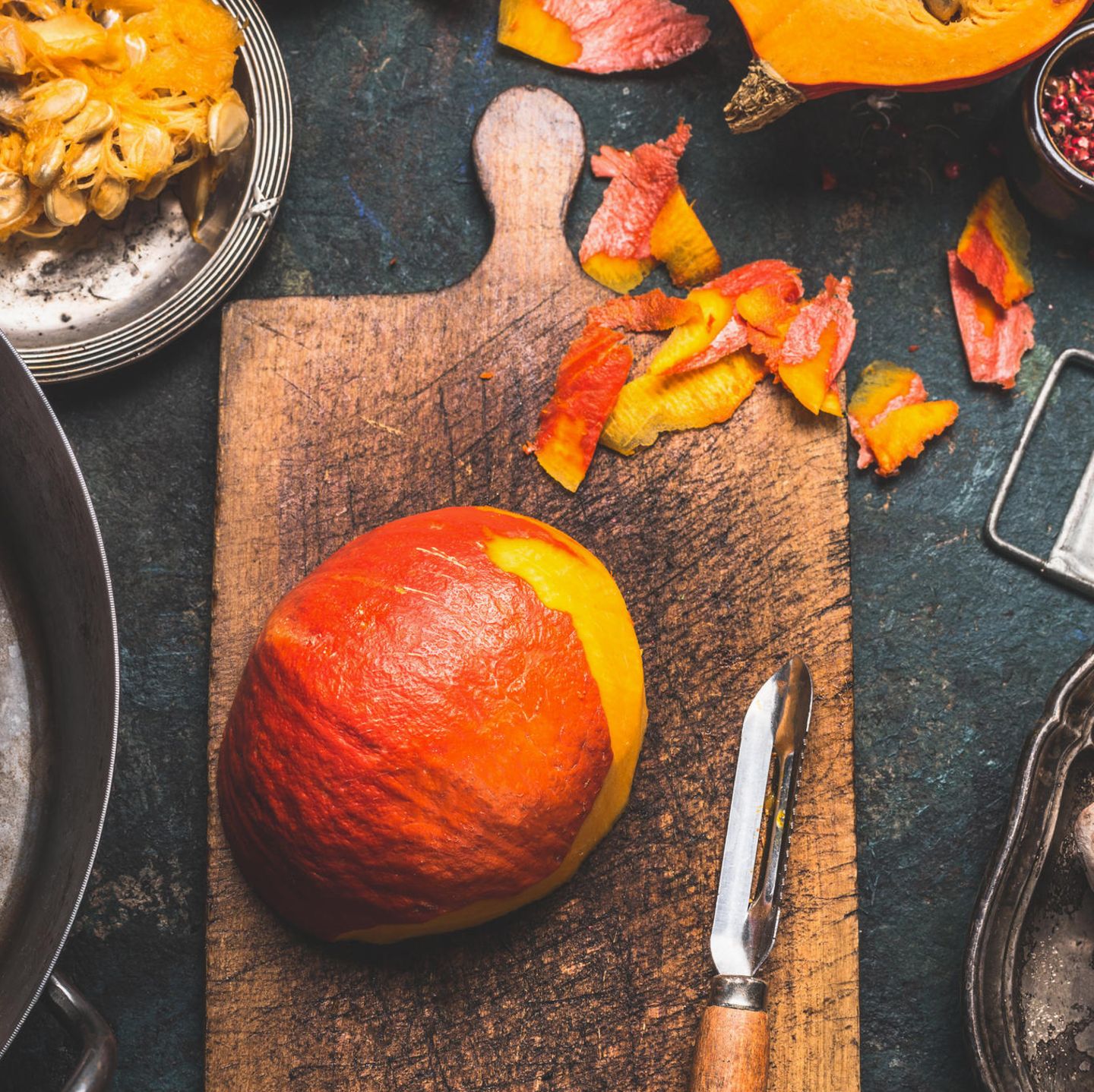Autumn is coming and with it the pumpkins are making their way back into our kitchens. But this year we are trying new things and are also cooking with nutmeg squash.
The nutmeg pumpkin is one of the eye-catchers among the pumpkin varieties: large and impressive, with an artfully ribbed shell, it smiles at us in bright colors from dark green to light brown in autumn. And otherwise it can convince across the board with its firm, tasty pulp, its almost unshakable shelf life and its undemanding care.
With so many advantages, it goes without saying that it is easy and versatile to process in the kitchen. We introduce you to the nutmeg pumpkin in detail.
What is nutmeg squash?
Like the butternut squash, the nutmeg squash is a musk squash. This is also its closest relative among the pumpkins. The pumpkin owes its name to the pleasantly spicy scent of its pulp, which varies in color from yellow to orange-red. In turn, it is very similar to the popular Hokkaido pumpkin. Another characteristic is its round, ribbed shape, which makes it look almost like a painting.
What does nutmeg pumpkin taste like?
In terms of taste, the nutmeg squash has a very fruity pulp that tends to be slightly acidic. In addition, there is the fine nutmeg note that gave it its name.
You can tease out the name-giving aroma more if you also add freshly grated nutmeg to the pumpkin dish. Accordingly, ginger or chilli are also ideal companions. That screams out for exotic dishes.
You can even eat the pumpkin raw, the mild meat tastes good in salads, for example, but is also very suitable for the preparation of desserts, for baking and for preparing pumpkin chutney and of course pumpkin soup.
How do you recognize a ripe nutmeg pumpkin?
Nutmeg pumpkin has a soft skin and fewer seeds than most other types of pumpkin. The advantage: less waste, more delicious pulp! It tastes best when it is not fully ripe. This can be seen from the color of the bowl. In the course of the ripening process, the color changes from a rich dark green to an orange or beige shade.
The knock test can also help: if you knock the bowl with your knuckle, you should hear a hollow noise. Then the degree of maturity is optimal. As soon as the pumpkin sounds dull when you tap it, it begins to spoil. Then you should enjoy it carefully.
Do you have to peel the nutmeg squash?
Although the skin of this type of pumpkin is much thinner than that of other types, it is still advisable to peel the pumpkin. Before preparation, simply cut the thin peel from the pulp and remove the few stones. Then cut the meat into strips or cubes.
You can also use a Food processor or grate finely with a grater and then process into pumpkin soup or sprinkle the pulp over salads. Or try something new and puree the softly boiled meat with potatoes.
Delicious recipes with nutmeg squash
Pumpkin soup with chestnuts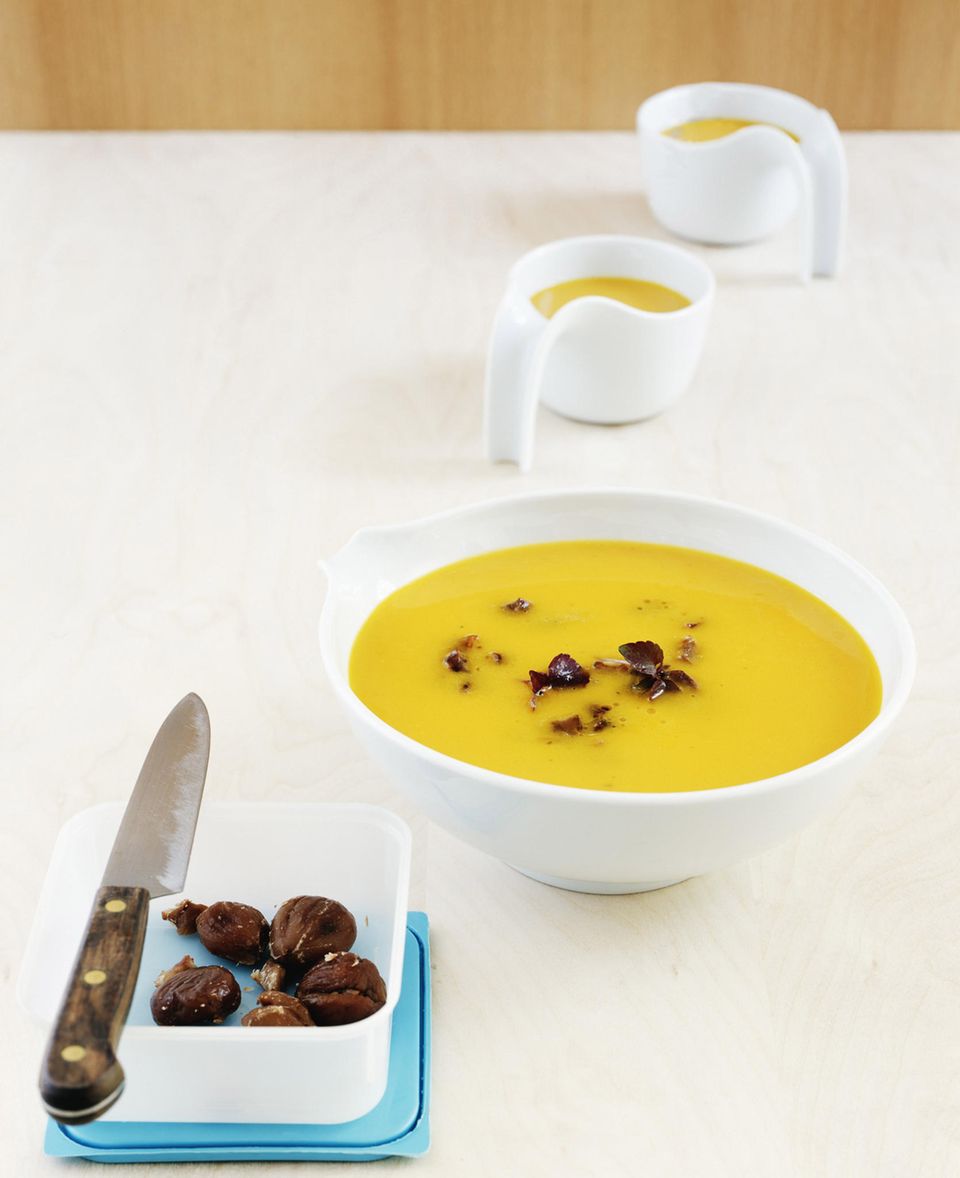
Nothing beats pumpkin soup in autumn. And it doesn't always have to be prepared with Hokkaido. In this variant, the nutty aroma of chestnuts is combined with the slightly exotic nuances of the nutmeg pumpkin. The recipe: Pumpkin soup with chestnuts
Baked nutmeg squash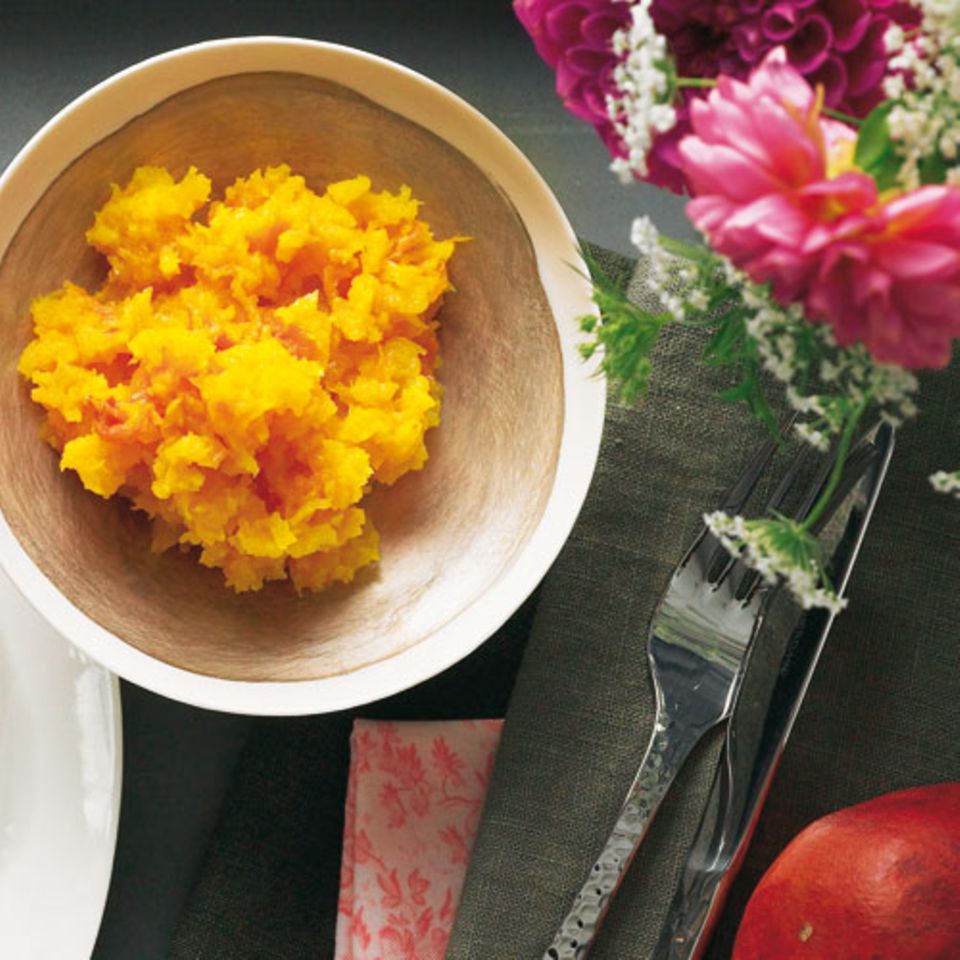
This recipe is so easy it almost goes by itself! The pumpkin meat is simply seasoned – and your oven does the rest of the work. After 45 minutes, a delicious autumn dish is on the table. About the recipe: Baked pumpkin
Pumpkin ravioli based on Lea Linster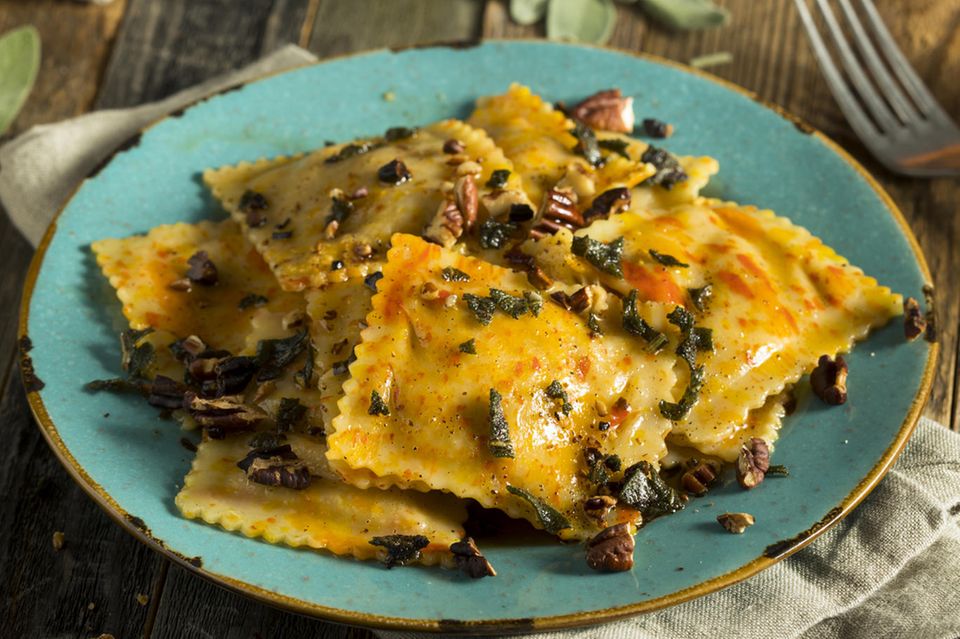
"I always look forward to the days around Halloween, mostly to the pumpkin heads. Oh, actually only to the pumpkin meat when it is smuggling in my pots!" Writes top chef Lea Linster and recommends her pumpkin ravioli with nutmeg squash, which she goes with Served sage butter. To the recipe: Pumpkin ravioli
Sweet and sour pickled pumpkin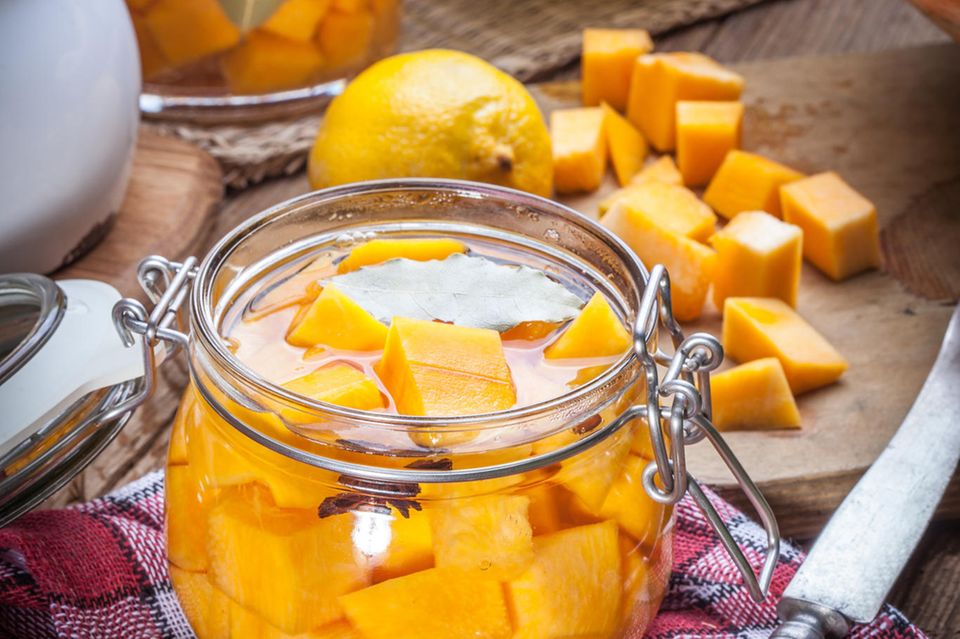
Pickled sweet and sour nutmeg squash can be kept for up to six months. Prepared according to this recipe, it tastes great with bread or pan-fried meat. The recipe: Sweet and sour pickled pumpkin
Savoy cabbage and green spelled roulades with pumpkin chutney
The vegetarian roulades are made from savoy cabbage, green spelled, nuts and sultanas and then served with a pumpkin chutney made from nutmeg squash and a bechamel sauce. The recipe: Savoy cabbage and green spelled roulades with pumpkin chutney
What do you have to consider when storing?
Nutmeg pumpkins can be very large and heavy. Individual specimens can weigh up to 40 kilograms. In the supermarket they are therefore usually available cut open and packaged in parts. But if you stroll through the market in autumn, you might be able to take a whole splendid specimen home with you. Then it makes sense to cook in advance. It is best to freeze a few servings of pumpkin soup, boil pumpkin jam, bake pumpkin pie and reduce the pumpkin compote. Then you've had something from your pumpkin for a long time.
But even as a whole, the nutmeg squash will keep for a long time if you store it in a cool and dry place. In the cellar and in the pantry it easily lasts for half a year. Sliced pumpkin can be kept in the refrigerator for 3-4 days if you wrap it in cling film. Or you can dice the pulp, blanch it in boiling salted water for 1-2 minutes, let it drain, cool and then freeze the meat. Then you will always have the nutmeg pumpkin on hand, if you suddenly feel like trying recipes with pumpkin.
Video tip: peeling the pumpkin: it's that easy!
